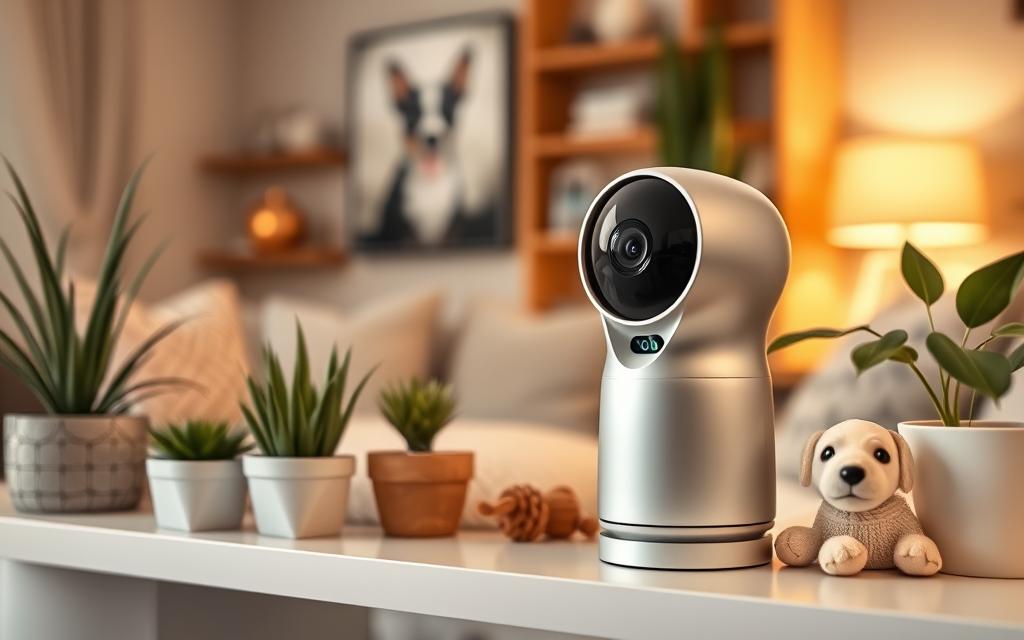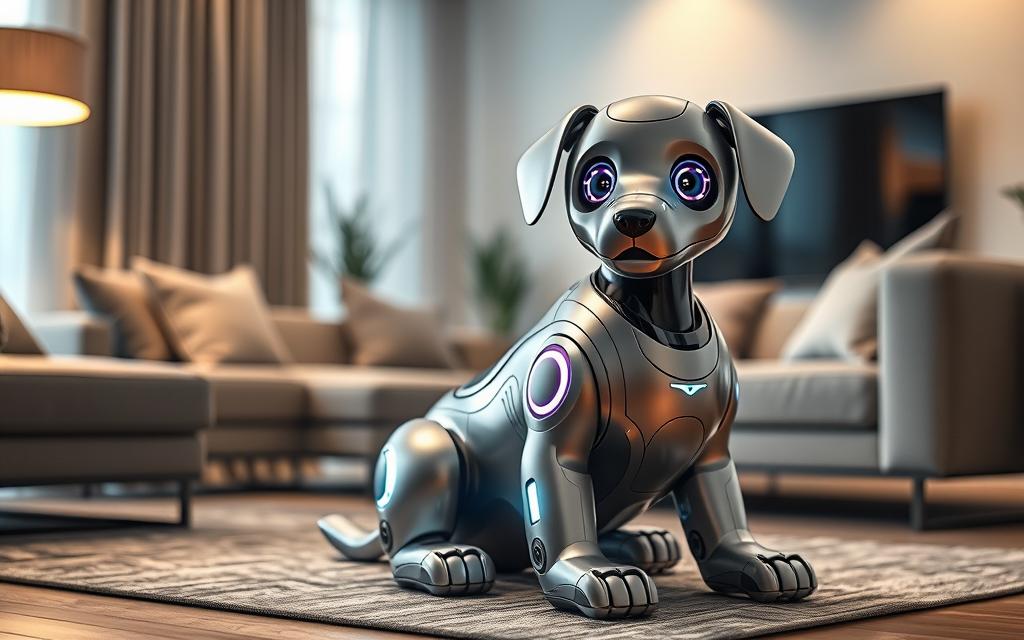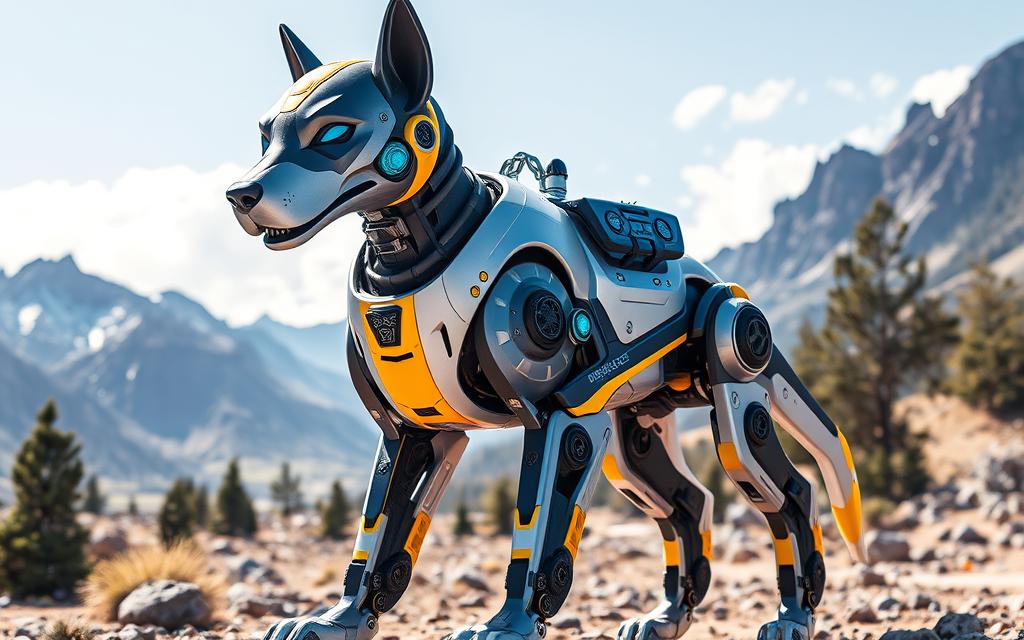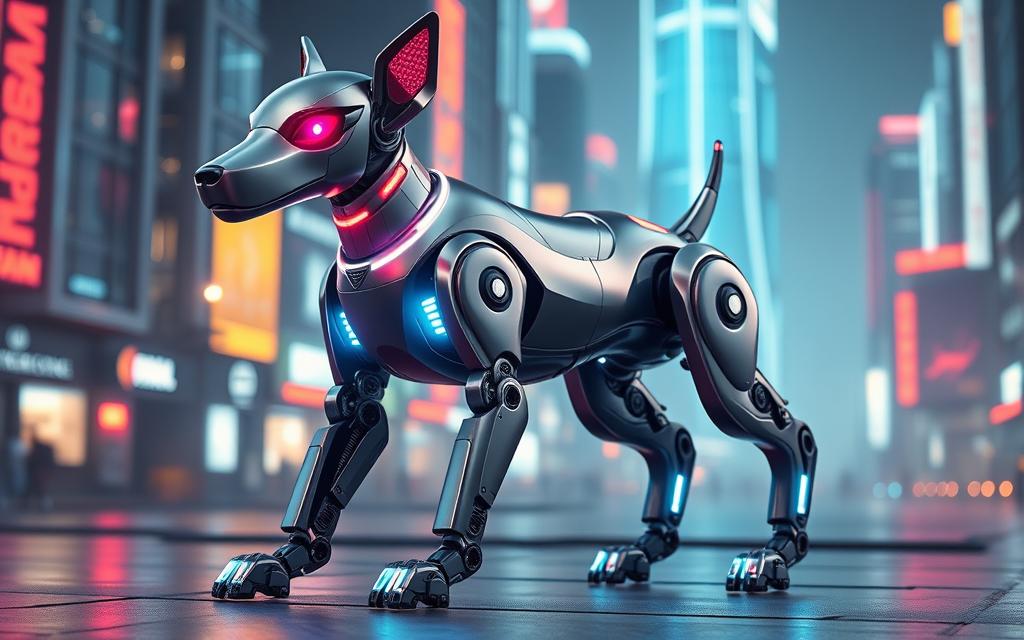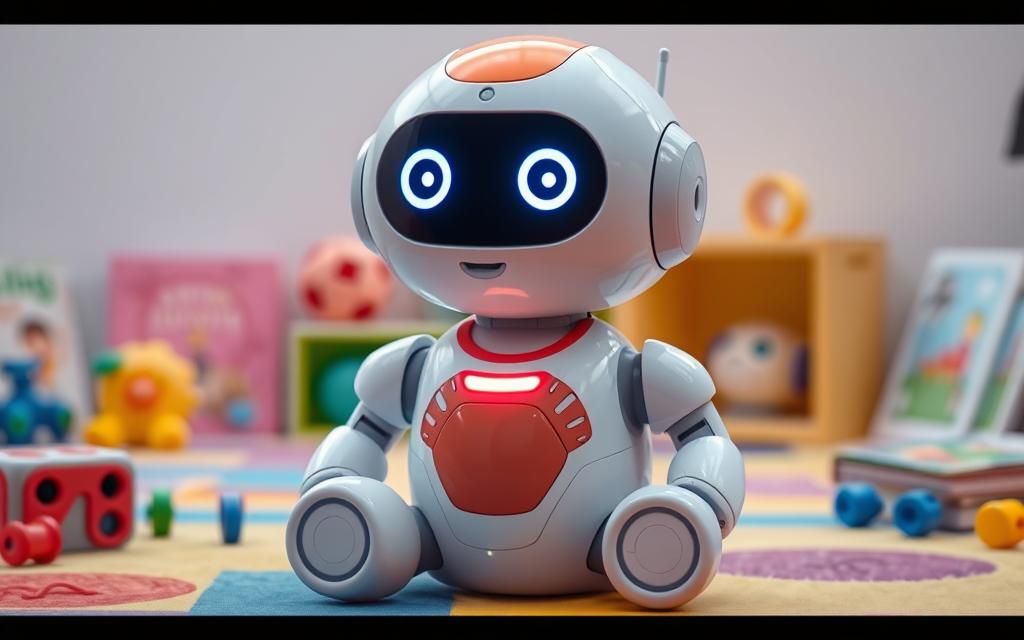Have you ever thought about how humans and robots might interact in the future? As someone who loves technology, I find talking robots really interesting. They could change our daily lives in big ways.
Imagine talking to machines about simple things like ordering a beer or getting directions. Or even deeper topics. It’s both exciting and a bit scary.
Author David Ewing Duncan’s book “Talking To Robots” gives us a peek into this future. He talks about a world where humans and robots live together. We might even become “Homo Digitalis” or “Homo Syntheticis.”
Duncan shows us robots like the Beer Bot and the Driver Bot. He also mentions the Intimacy Bot, which sparks both curiosity and concern.
Duncan also talks about the scary side of robots. He discusses job loss, Universal Basic Income, and AI in the military. But he stays hopeful, focusing on the good things.
He believes women will play a big role in this new world. He also sees great potential in humans and robots working together.
Key Takeaways
- Explore the fascinating reality of talking robots and their transformative potential
- Discover the advancements in voice recognition, natural language processing, and conversational AI
- Understand the science behind human-machine interaction and the future of intelligent virtual assistants
- Learn about the evolution of dialogue systems and voice user interfaces for enhanced communication
- Gain insights into the opportunities and challenges of the “Cambrian explosion period of robot history”
If you love tech, want to inspire your kids, or just want to know more about the future, join me. Let’s explore the world of talking robots together. The future is ours to create, one conversation at a time.
Exploring the Fascinating Reality of Talking Robots
Voice recognition and natural language processing are key to talking robots. They let robots understand and talk back to humans. This tech is used in chatbots and virtual assistants, making them seem more human.
These robots are getting smarter and more like us. They can move around like humans and even use tools. They can walk, run, and even go up stairs.
Voice Recognition and Natural Language Processing
Voice recognition and natural language processing are crucial for talking robots. They help robots understand and talk back to humans. This is important for chatbots and virtual assistants to have real conversations.
Conversational AI: Chatbots and Virtual Assistants
Chatbots and virtual assistants like Siri and Alexa use these technologies. They can understand and respond to human speech. As they get better, robots are becoming more like us in how they interact.
| Technology | Application | Advantage |
|---|---|---|
| Voice recognition | Enabling robots to understand human speech | Facilitates natural interaction between humans and robots |
| Natural language processing | Allowing robots to interpret and respond to human language | Enhances the conversational abilities of robots |
| Chatbots | Computer programs designed to simulate conversation | Provides an interactive and engaging interface for users |
| Virtual assistants | Robots that can perform a variety of tasks in response to voice commands | Offers hands-free, voice-activated control for users |
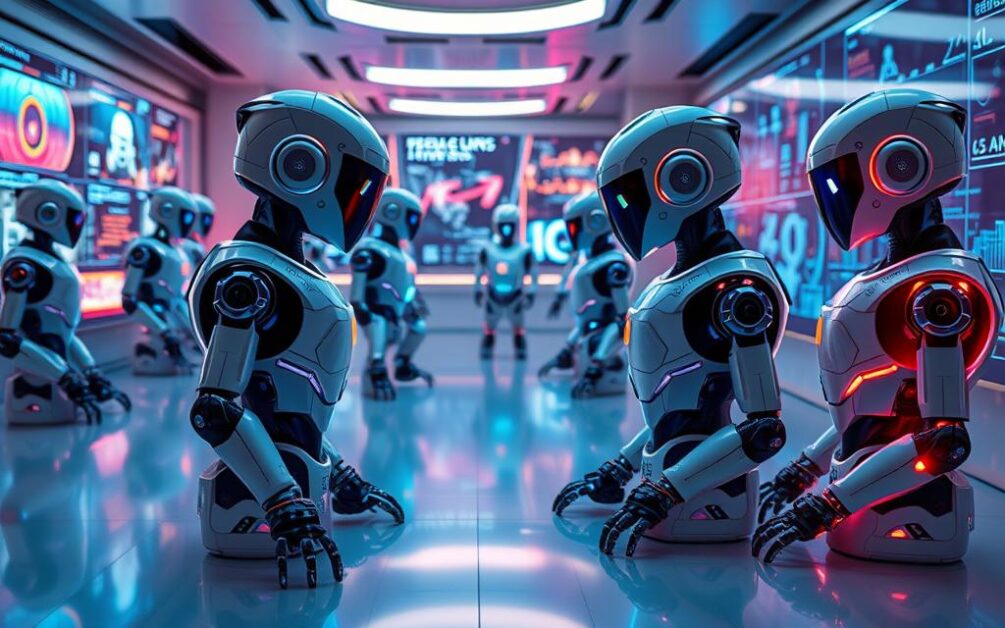
“The quest to create conscious humanoids has been a dream since Fritz Lang’s Metropolis in 1927 and Isaac Asimov’s Three Laws of Robotics.”
Unveiling the Marvels of Speech Synthesis
The world of talking robots is fascinating. It’s where humans and machines interact in new ways. Speech synthesis is at the core, turning text into sounds that feel natural.
Thanks to advanced algorithms and learning, robots can talk to us in a way that feels real. This makes our interactions with them more natural and fun.
The Science Behind Human-Machine Interaction
Scientists are working hard to make humans and machines talk like friends. They use natural language processing and learning to make robots understand and answer us well. This makes talking to robots feel like talking to another person.
But, making robots that feel real is tough. The “Uncanny Valley” makes us feel uneasy when robots look too human. Scientists are trying to make robots that feel as real as people do.
| Key Milestones in Speech Synthesis | Advancements in Human-Machine Interaction |
|---|---|
|
|
The future of talking robots is exciting. They will help us in many ways, like learning and getting things done. This technology is bringing us closer to a world where machines and humans work together seamlessly.
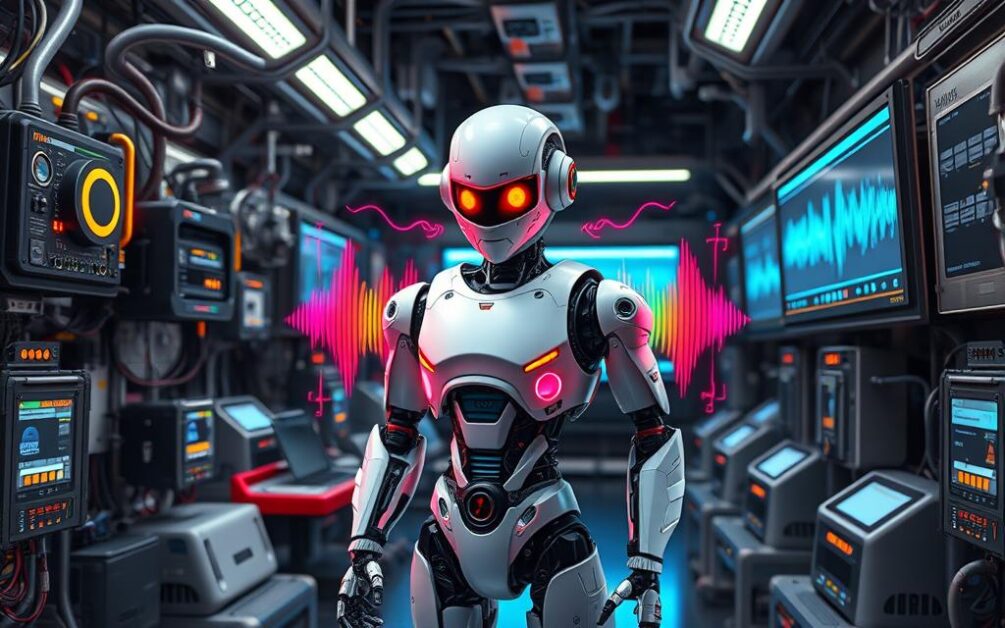
Talking Robot: The Future of Intelligent Virtual Assistants
The digital age is here, and talking robots and virtual assistants are key. They can understand us, talk back, and help with many tasks. They’re set to become a big part of our lives.
New tech in speech and language has made these assistants better. Big companies are now using this tech in many areas. This shows how fast these systems are improving.
From Siri to chatbots, these assistants are everywhere. They’re not just features anymore. They’ve changed how we talk to tech.
The future looks bright for talking robots and virtual assistants. They’ll make talking to machines easier and more natural. They’ll be our friends at work and home, changing how we live and work.
| Advancement | Application | Impact |
|---|---|---|
| Speech recognition and natural language processing | Intelligent virtual assistants in consumer and enterprise settings | Improved customer experience and communication channels, surpassing traditional Interactive Voice Response systems |
| Conversational AI and machine learning | Socially-aware virtual assistants like SARA, developed at Carnegie Mellon University | Enhanced rapport-building, task performance, and continuous learning capabilities through the integration of artificial and human intelligence |
| Advancements in deep neural networks and AI technologies | Integration of talking robots and intelligent virtual assistants across various industries | Increased adoption and prevalence of AI-driven interactions as standalone products rather than mere features |
The future of talking robots and intelligent virtual assistants is exciting. As tech gets better, we’ll see these systems more in our lives. They’ll make our interactions with machines smoother and more natural.
Dialogue Systems and Voice User Interfaces
Dialogue systems and voice user interfaces are key for good communication between humans and talking robots. They make talking to robots easy, using natural language and voice commands.
Enhancing Communication with Talking Robots
Dialogue systems understand and answer natural language. This lets users talk to robots like they would to people. Voice user interfaces, like smart speakers, make it easy to control robots without using your hands.
These technologies are getting better, making it easier for humans and robots to work together. Personalized voice interfaces, with unique tones and personalities, make interactions more natural and fun. It’s important to think about where these interfaces will be used, from quiet homes to busy public areas.
Building trust with users is also key. It’s important to keep their privacy, avoid offensive content, and not push too many ads. This makes for a better experience.
By combining dialogue systems and voice user interfaces, talking robots become more user-friendly. This opens the door to better collaboration and communication between humans and robots.
“Designing for Voice First interactions necessitates creating hands-free and eyes-free user interfaces to ensure seamless operation, with a screen as a complementary element.”
Conclusion
The world of talking robots is full of exciting possibilities. It’s changing how we use technology. With better voice recognition and AI, these robots are getting smarter and more like us. They help us as personal assistants, customer service, and even teachers.
Experts like Vaibhav Unhelkar at Rice University are leading this change. They work on making robots and humans work together better. Their goal is to make our interactions with robots smooth and natural.
Talking robots are set to make our lives better. Imagine having a virtual assistant that knows what you need before you ask. Or chatbots that give you personal help. The future with talking robots looks bright and full of possibilities.

